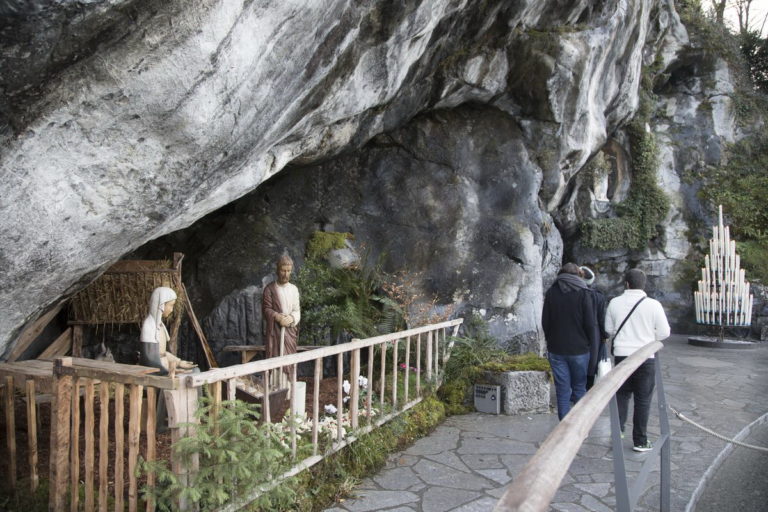At the Rosary basilica : the Boly mill
Bernadette was born on 7th January 1844, at the Boly mill, “the mill of happiness”. So nicknamed, because it sheltered the Soubirous family during their few happy years, simply punctuated by Christian traditions and the murmuring of the Lapacca stream which turned the millstones. Her baptism on 9th January two days after her birth, gave rise to a beautiful celebration. The shimmering colours of the costumes of the figurines, their number, give this crib the impression of movement. We might even imagine the sounds of the party given by this family, in this time of the epiphany, imbued with the happiness of experiencing, with a simple faith, the arrival of their first-born child. The family spent ten generally peaceful years here, although disturbed by Louise, the mother, burning her chest, forcing her to place her baby Bernadette with a nurse in Bartrès, for eighteen months, and the father, François, losing an eye when trying to move a millstone. The kind hearts of the Soubirous, who could never bring themselves to ask for everything that was due to them for their work, and the competition from industrial mills, drove them to the beginnings of bankruptcy. They fared no better in the mills to which they then moved. Little by little, the family descended into abject poverty, there was no more money for food or to pay the rent. In June 1854, the Soubirous family, ruined, had to leave the “mill of happiness”
Teaching. The example of the Soubirous family can teach us an important lesson. The best tonic for children is the love of their parents. And prayer. Thus, when we are faced with difficulties, faith provides the answers, because one is never alone again. The Soubirous family prayed. The sky might have darkened, but Bernadette never doubted.
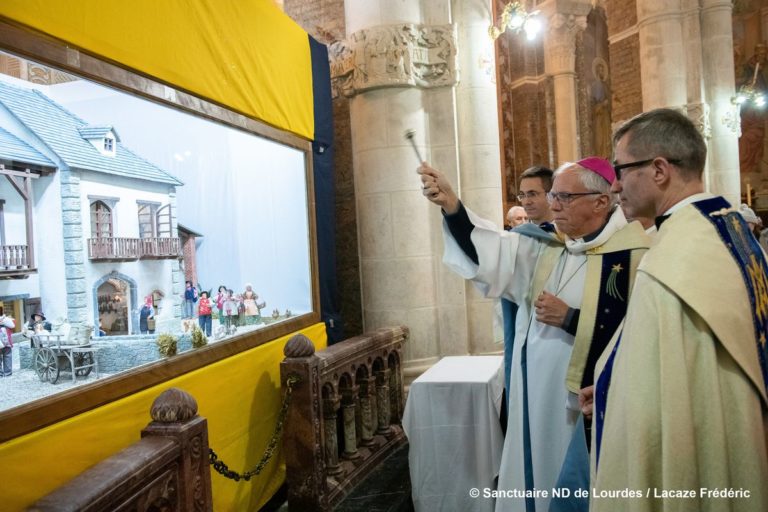
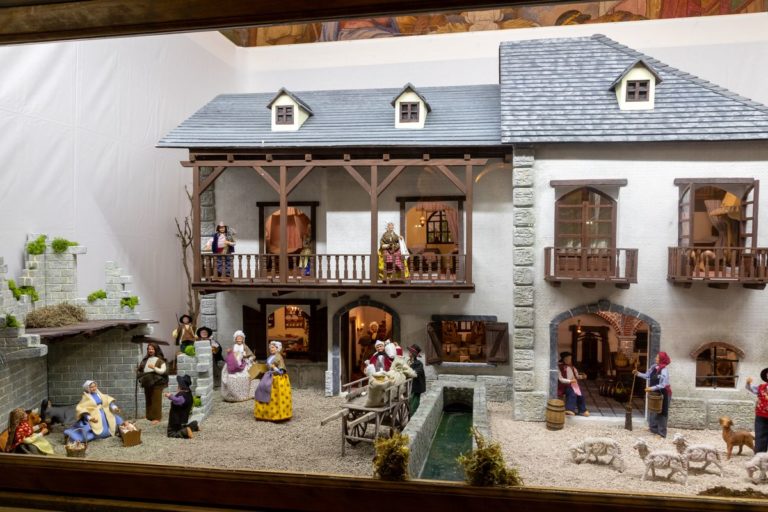
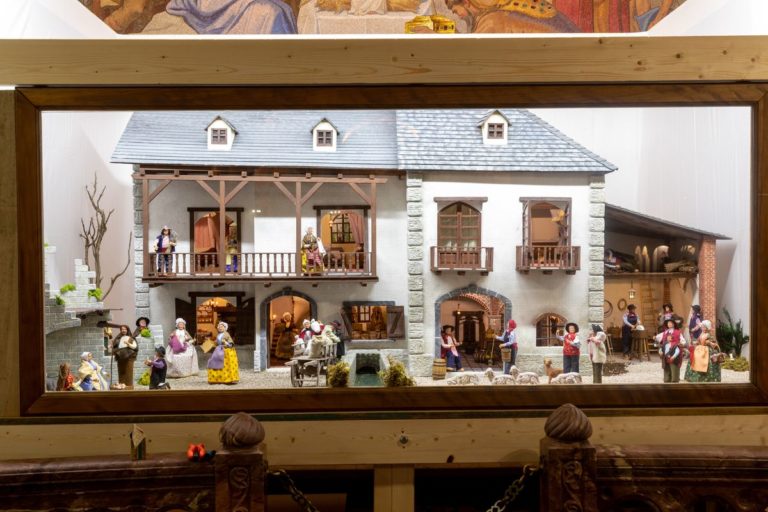
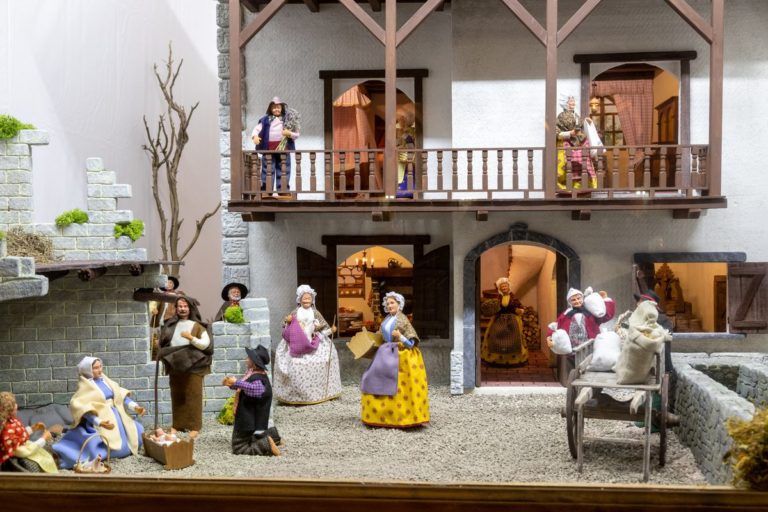
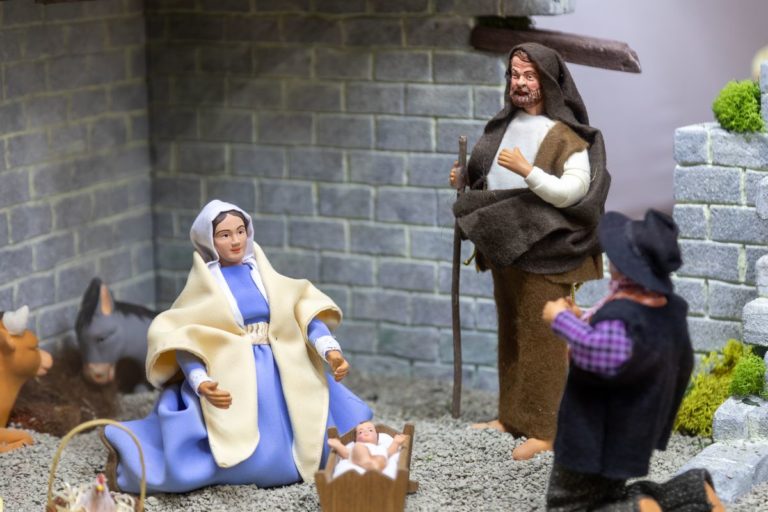
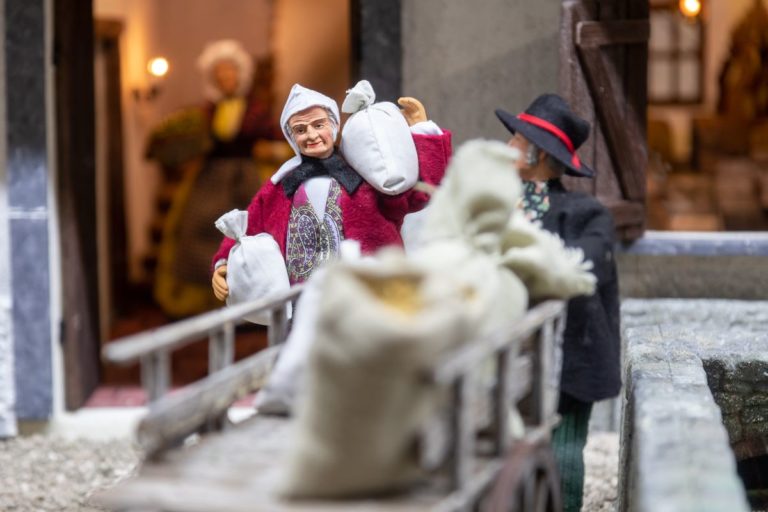
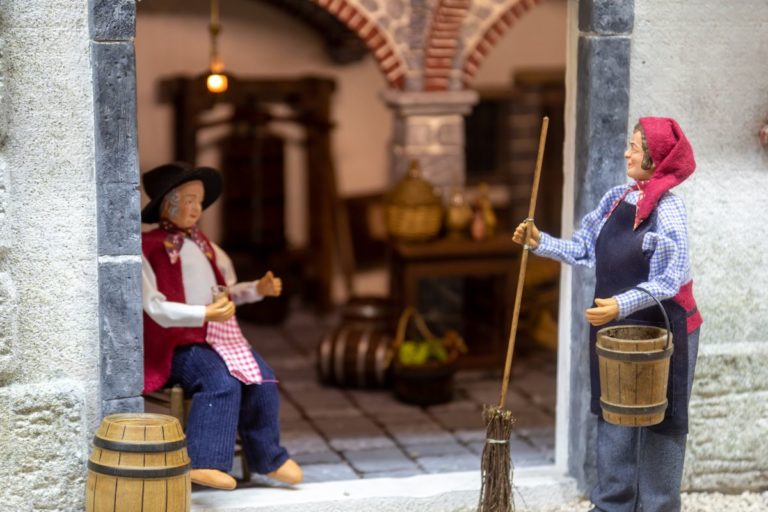
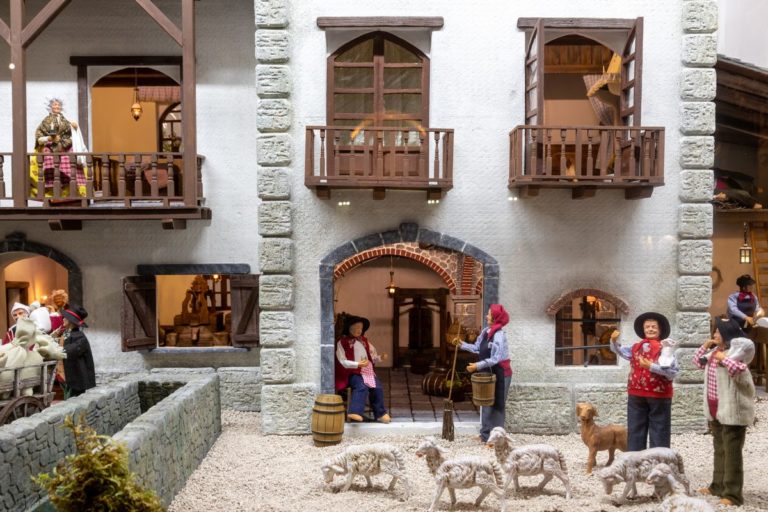
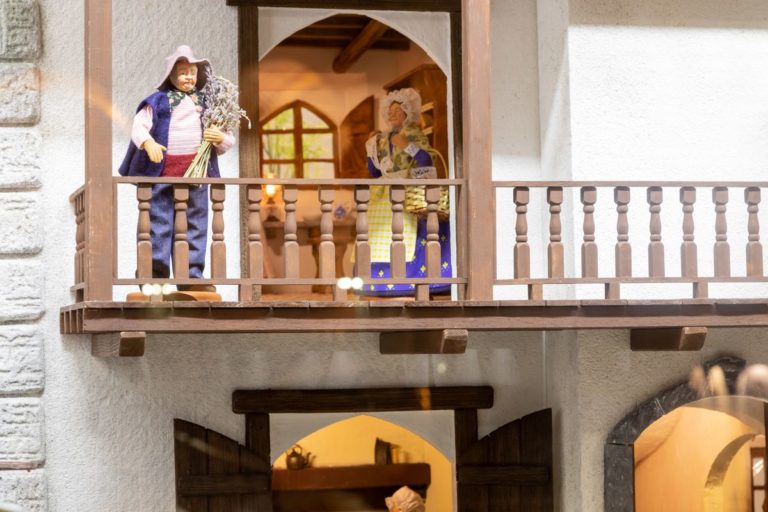
At the Immaculate Conception Basilica : the cachot
After trying to run successively smaller and smaller mills for three years, the Soubirous family ended up at the “cachot”, an old disused prison owned by by cousin Sajous, who occupied the accommodation on the first floor. This unsanitary, dark and smelly accommodation was described by the imperial prosecutor as “foul and dark”. It was during this period that François Soubirous was arrested and thrown into prison, accused of having stolen two sacks of flour. His guilt seemed evident, since he was the poorest person in Lourdes. He was released a week later because no charges could be held against him. But there was still distrust. The Soubirous family, rich in their faith, stood firm against everyone. They prayed morning and evening with such fervour, that their cousin used to hear them. They kept a spirit of peace and harmony in their hearts. You can see a monk figurine in front of the cachot, as if to remind us that even in the most miserable, most repulsive place, God is there. As a nod and a wink from the artist, this man of God is the image of Father Andrea Caruso, Capuchin, chaplain of the sanctuary, the originator of this request for cribs in Lourdes, who died last June.
Bernadette’s health was very fragile. The family didn’t eat every day in the cachot. Bernadette had to take care of her brother and sister to allow her mother to go to work so she couldn’t go to school. Knowing how to read and write French was a necessary condition for taking catechism classes and making one’s first communion, which was her dearest wish. In September 1857, her parents decided to place her with her nanny, in Bartrès, where she would be able to eat as much as she wanted, in exchange for undertaking some light work, such as taking care of the sheep. The nurse tried to teach her the catechism. But Bernadette had great difficulty in memorising texts that she did not understand since they were in French. She only spoke the local dialect. When she learned of the departure of the parish priest of Bartrès, her last hopes of being able to make her communion were dashed. She asked for permission to return to Lourdes, on 21st January 1858, to follow the catechism.
Teaching – The scene represented by this crib depicts Bernadette’s Christmas in the cachot… the difference between the life of the Soubirous and that of a distinguished family in Lourdes is obvious… This depiction helps us to enter into the gospel story of the Nativity. Anyone who is overwhelmed by material wealth is looking for and expecting nothing. If you are convinced that you are fine on your own, you do not need a Saviour. Only those who suffer because they lack something in their existence – whether material or spiritual – only these are waiting and wanting to be rescued. Like Bernadette’s family, let’s draw our strength from the hope that our faith gives, even at the worst moments of our lives, let’s never forget that God is just there waiting for our us to appeal to him through our prayer.
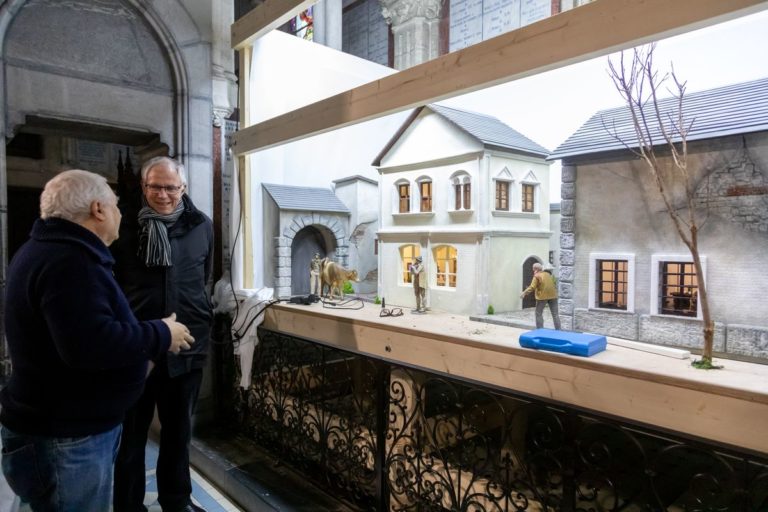
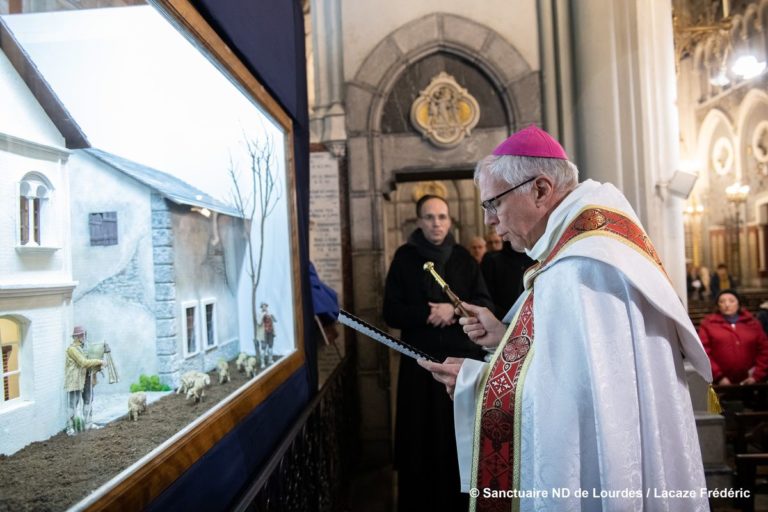
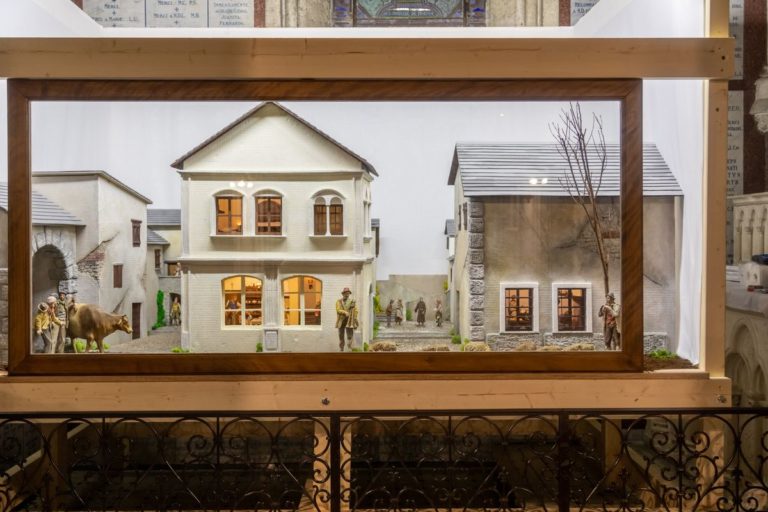
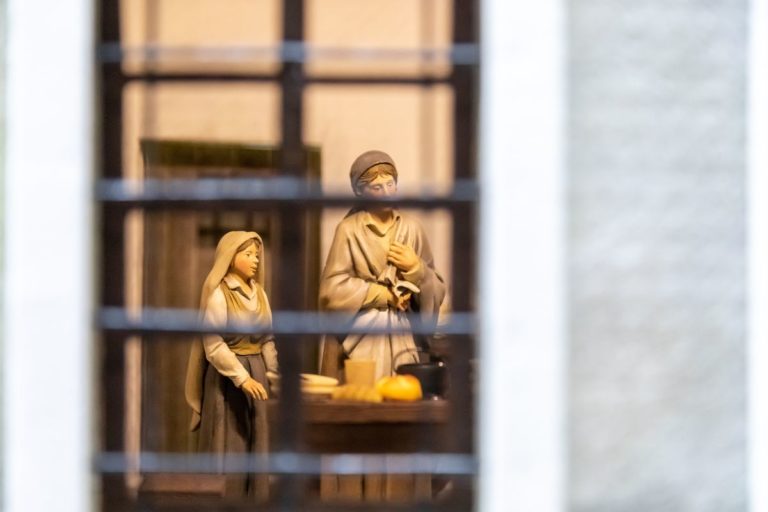
At the crypt : the Grotto of Massabielle
There is no more wood at the cachot. Despite the risk of another asthma attack, as it was very cold this 11th February, Bernadette wanted to help the family like her sister, Toinette, and, with a friend, Baloume, by going to get dead wood. The Massabielle grotto was located on the edge of Lourdes. In 1858, it was reached by crossing the meadow of the Savy mill and then the Lapacca stream. Inside was just rubbish, flotsam and jetsam thrown up by the Gave and the stream when it overflowed. This place was called “the pig sty” because it was where the town swineherd sheltered his pigs. This was where the Virgin burst into Bernadette’s life. She showed her presence through a breath of wind, the breath of life, of new life. Bernadette, the girl whom the people of Lourdes called “the little urchin” because of the foul smell she had on her, from her life in the cachot (see Sanctuary Site). It was she, the most ignorant, to whom the beautiful Lady of Massabielle had chosen to deliver her message, a message which today drives millions of people to come and place at the base of this rock all that they can no longer bear without help from Heaven. In this representation, Mary, Joseph, and the Child Jesus have their arms open, a sign of welcome for all those who approach. A child who leads the flock, is the only one to see the messanger from Heaven, and he reaches a finger towards the hollow of the rock. Like Bernadette.
Teaching – The Grotto of Massabielle in common with the stable in Bethlehem, was most unwelcoming … In Bethlehem, a natural shelter was converted into a stable. The soil strewn with old straw mixed with dried droppings. Despite the cold, the smell remained strong. Opposite the entrance was a manger with an ox. When Bernadette arrived at the Grotto of Massabielle on 11th February 1858, she too was wading through the mud…
The Grotto calls us to a real conversion, because certainly, it is not easy to recognise the saviour in the sign that God gave to the shepherds, as he gives it to us: “You will find a new-born baby wrapped in swaddling clothes and lying in a manger.” We often have to make a great effort to recognise the Almighty Saviour in the weakness, the total dependence of the baby housed in this dark place! But the Stable in Bethlehem, like the Grotto of Massabielle, brings us back to our own dark corners, to our hearts which can be transformed, regenerated in this dark, cold, dirty and smelly place, and be washed by the Source that is Christ.
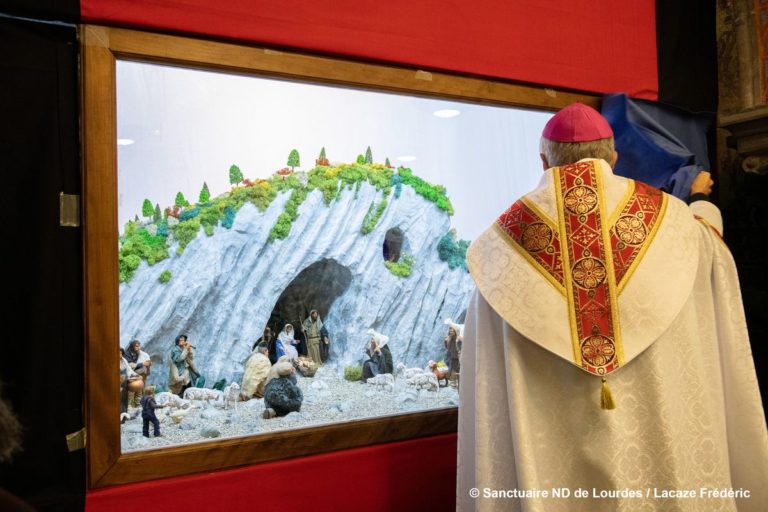
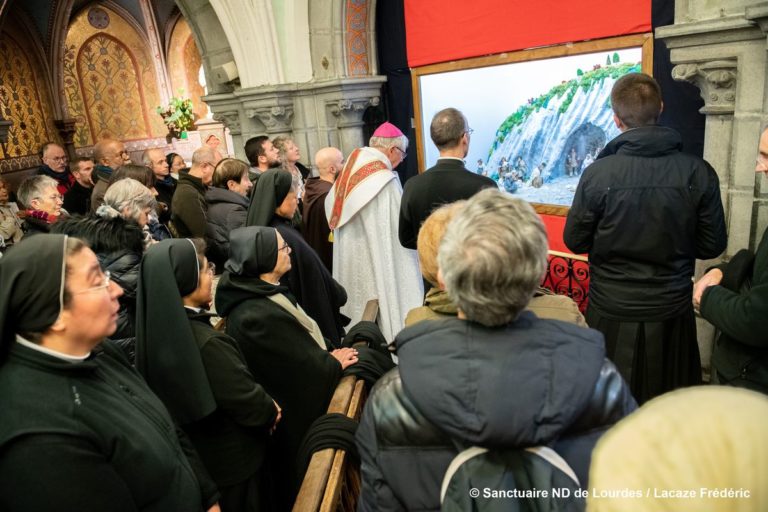
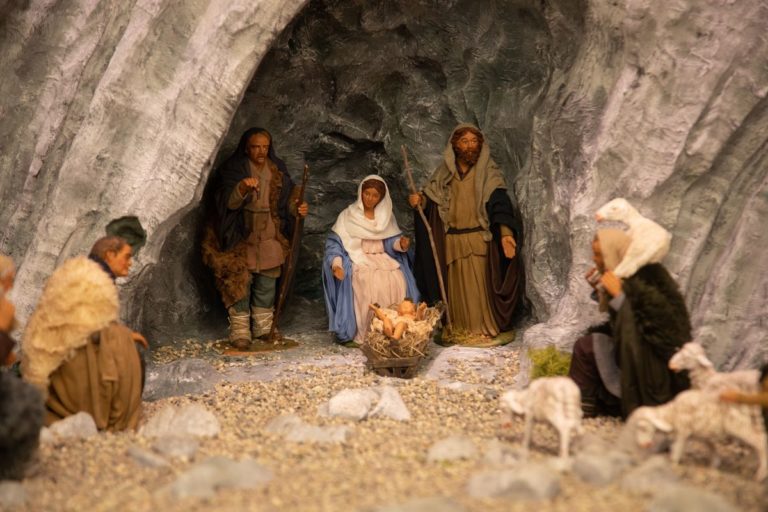
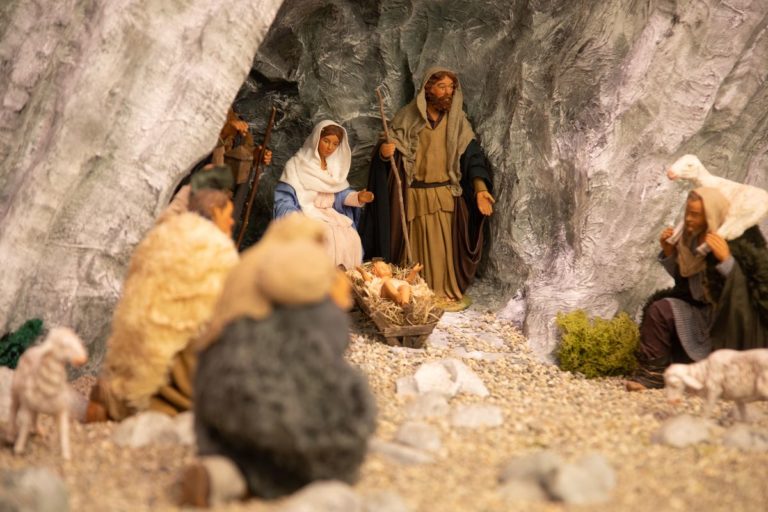
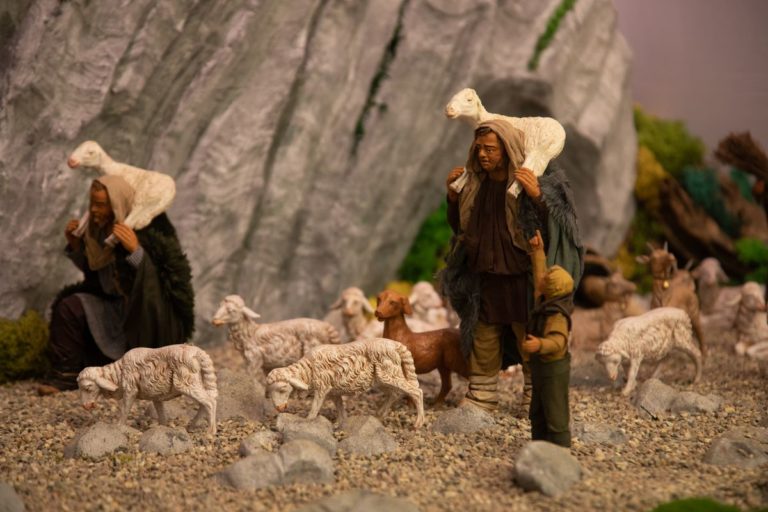
The crib in the Grotto
What Saint Francis did in Greccio on Christmas night 1223 was a moving and inspiring idea. We often think that he wanted to create a kind of sacred, theatrical performance … But it wasn’t that at all: he had a mass celebrated in a stable. Revolutionary! Francis wanted a eucharist in the hay, between a donkey and an ox. The sources are clear on this. The first biographer, Thomas de Celano, says that Francis of Assisi wanted “to recall the memory of that Child who was born in Bethlehem, to see with bodily eyes the inconveniences of his infancy, how he lay in the manger, and how the ox and ass stood by.” He wanted to commemorate this event: a child born among the beasts. There was nothing heretical about it, because the Poor Man of Assisi simply emphasised that, “He, the Creator of the universe, lowered himself to our smallness”.
Teaching – Recently, Pope Francis has written an Apostolic Letter on the meaning of the manger. Born from the intuition of Saint Francis of Assisi: the simplicity of the Nativity. Over time, this tradition has grown around the world. All these reproductions of the manger in Bethlehem give us a message, Jesus is born in the places of our lives…, Christ was born in our midst, he lives with us. (Cf. Pope Francis, Admirabile).
